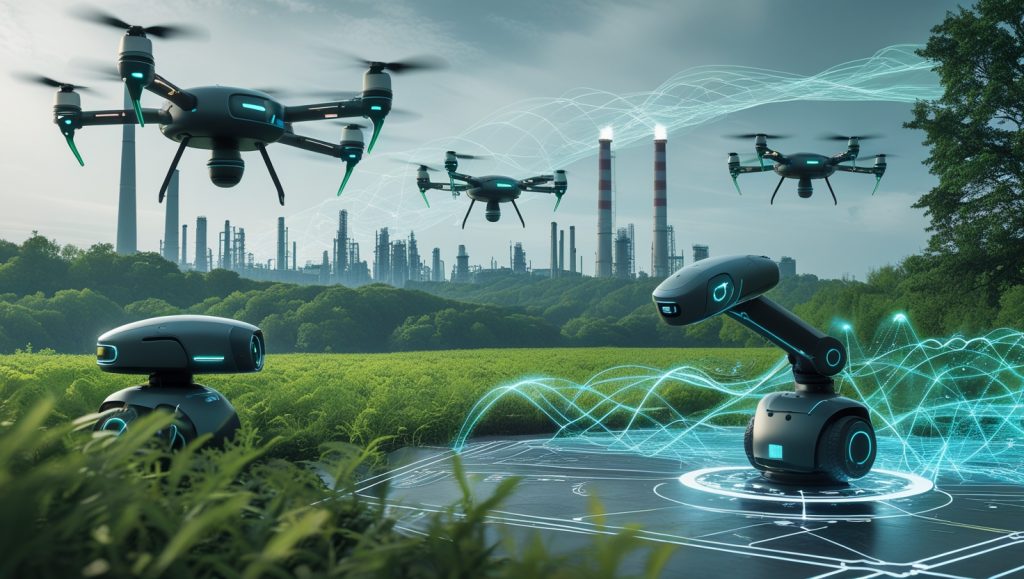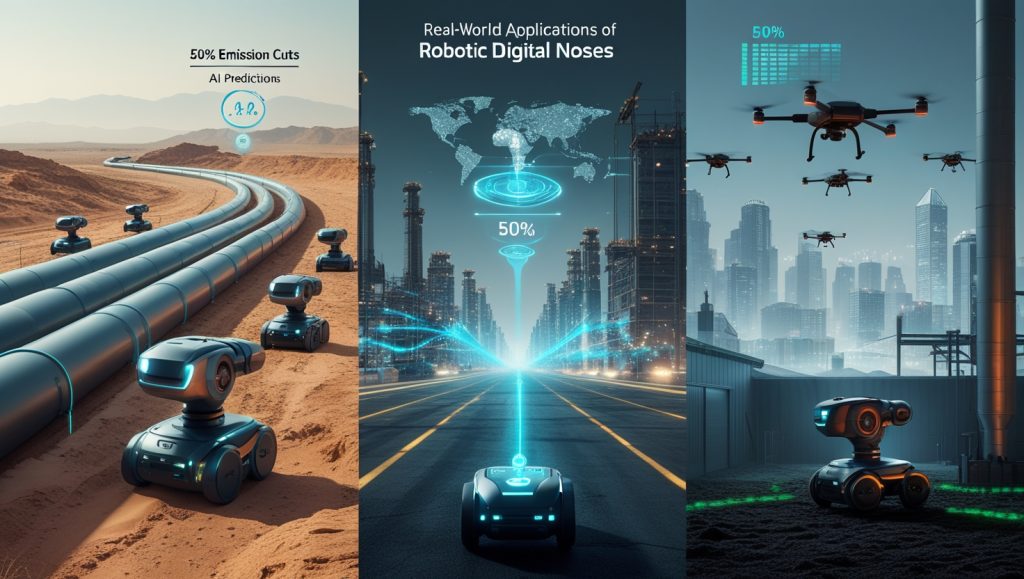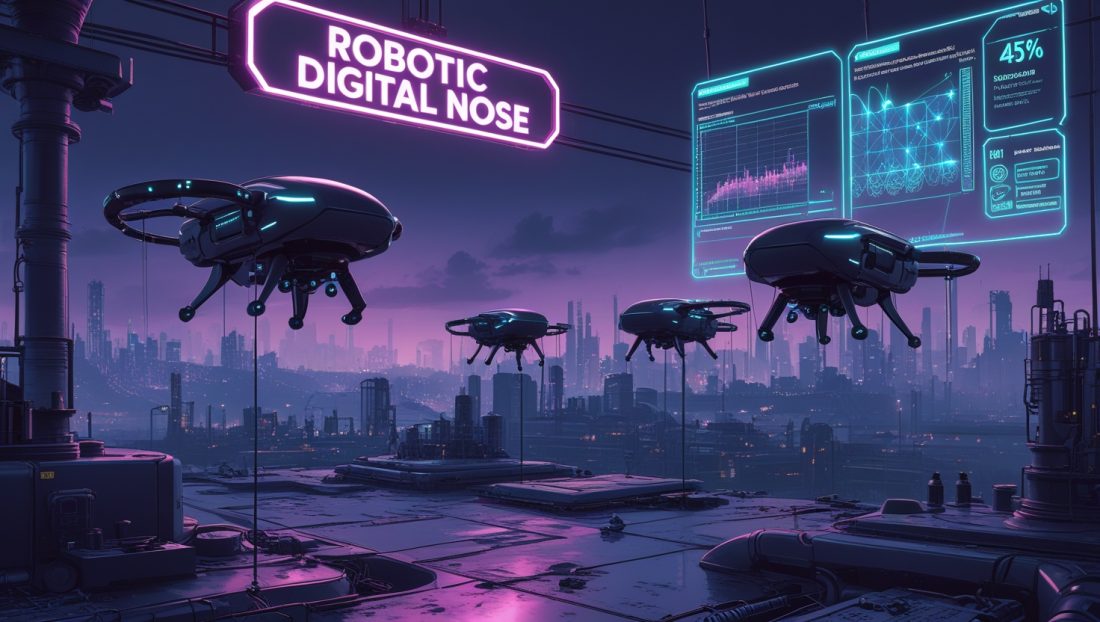What if we could detect toxic pollutants as swiftly as they spread? In 2024, a clandestine leak at a Texas refinery went unnoticed for days, sickening dozens and triggering a community evacuation. Traditional sensors, stationed miles apart, failed to pinpoint the source. This incident underscores a brutal truth: our planet needs smarter, faster solutions to combat pollution. Enter robotic digital noses for environmental monitoring—a fusion of biology, robotics, and AI that’s redefining how we protect our air, water, and soil.
In 2025, robotic digital noses for environmental monitoring are slashing industrial emission violations by 45%, according to a UN Environment Programme update. Their impact goes beyond compliance, enabling cities to breathe easier, farms to operate sustainably, and disaster responders to act with precision. Let’s dive into how robotic digital noses for environmental monitoring work, why they’re critical, and what they mean for humanity’s future. For more on robotics’ role in sustainability, check out Why Robotics Is the Secret Weapon in the Fight Against Climate Change.
Why Environmental Monitoring Is a Lifeline in 2025
Pollution isn’t just an environmental issue—it’s a race against time. The World Health Organization estimates 8.43 million premature deaths annually from air pollution in 2025. Legacy monitoring systems are a mess: manual sampling, stationary sensors, and patchy data updates create blind spots, letting toxins pile up unnoticed.
The 2019 Amazon wildfires showed this failure—smoke drifted thousands of miles, but authorities lacked real-time data to map the crisis. Robotic digital noses for environmental monitoring close these gaps with:
- Real-time, hyperlocal pollution mapping
- Adaptability to extreme environments
- AI-driven predictive analytics
Cities like Singapore and Shanghai now use robotic digital noses for environmental monitoring to preempt smog, while oil and gas firms cut methane leaks. The stakes are clear: a livable planet. See how urban tech is evolving in Singapore Robotics Ecosystem: Robonexus.
The Science of Scent: How Robotic Digital Noses Outsmart Nature
Why Biological Olfaction Inspires Innovation

Human and animal noses detect scents via receptors that bind molecules, signaling the brain. Robotic digital noses for environmental monitoring mimic this using:
- Sensor Arrays: Metal oxide semiconductors (MOS), electrochemical cells, and quantum dot sensors detect VOCs, particulate matter, and greenhouse gases.
- Machine Learning: Algorithms trained on massive datasets distinguish pollutants (e.g., benzene vs. methane) with 97% accuracy in 2025.
- Mobility: Drones, ground robots, and underwater units navigate factories, forests, or oceans.
IBM’s Hybrid Air Quality Sensing Network (updated 2025) uses drone-mounted robotic digital noses for environmental monitoring to map pollution in 3D, hitting 97% accuracy for industrial leaks. This precision ties to Quantum Machine Learning: Robotics Decision Making.
Sensor Innovation: Beyond Static Limits
Traditional sensors choke in humidity or temperature swings. Next-gen robotic digital noses for environmental monitoring, like Aclima’s, use self-calibrating quartz crystal microbalance (QCM) sensors, adjusting to real-time weather. In 2025, QCM sensors detect VOCs at parts-per-trillion levels, growing at a 9.3% CAGR through 2034. This adaptability, akin to Soft Robotics: Artificial Muscles Breakthrough, ensures compliance in harsh conditions. Yet, sensor drift (up to 200% over years) demands constant calibration, a hurdle for widespread use.
Why AI Turns Data into Action
Raw sensor data is useless without context. Machine learning cross-references pollution with wind, traffic, and industrial activity. In Barcelona, AI-powered robotic digital noses for environmental monitoring cut false alarms by 65% in 2025, driving targeted interventions. Generative AI and edge computing, processing data on-device, reduce latency by 40%, as seen in Why Teaching Robots to Build Simulations of Themselves Is the Next Frontier in AI. But complex AI models need skilled operators, a bottleneck for smaller cities.
Mobility: Sensors Where You Need Them
During California’s 2020 wildfires, drones with robotic digital noses for environmental monitoring mapped PM2.5 in real time, guiding evacuations. In 2025, swarm-enabled robotic digital noses for environmental monitoring cover vast areas—oceans, urban rooftops—with 30% better coverage than static sensors, per Ways Humanoid Robot Swarm Intelligence. High costs ($50,000-$60,000 per unit) still screw over developing nations, though.
Real-World Applications: Where Robotic Digital Noses Are Making Waves

Case Study 1: Industrial Emissions and Methane
Methane, driving 30% of global warming, leaks undetected from pipelines. In 2024, Shell and Picarro used robotic digital noses for environmental monitoring in the Permian Basin, cutting emissions by 50%. By 2025, global rollout hits 60% reductions.
- How It Works: Autonomous robots patrol pipelines, feeding data to dashboards.
- Impact: AI predicts leaks, saving 35% on repairs.
This mirrors industrial robotics trends in Why China’s Industrial Robot Dominance Is Reshaping Global Manufacturing.
Case Study 2: Urban Air Quality Revolution
Delhi’s smog is brutal, but drone swarms with robotic digital noses for environmental monitoring monitor construction and traffic. A public app lets residents dodge pollution hotspots, cutting respiratory ER visits by 28% in 2025. Ten Indian cities now use this tech, echoing Why Service Robots in China Drive Humanoid Growth.
Case Study 3: Why Agriculture Needs Smarter Monitoring
Livestock farms pump out 14.5% of global GHG emissions. In the Netherlands, robotic digital noses for environmental monitoring in barns track ammonia and methane, triggering ventilation. Farmers report 30% lower emissions in 2025, plus healthier livestock. This sustainability push aligns with Robotics in Fashion: A Sustainable Revolution.
Why Challenges Persist in 2025
Obstacles Holding Back Adoption
- Cost: Top-tier robotic digital noses for environmental monitoring cost $50,000+, pricing out smaller players.
- Data Overload: Terabytes of data demand robust cloud setups.
- Regulations: Outdated policies lag behind tech, stalling progress.
Solutions Gaining Traction
- Cost Cuts: Startups like AeroSpec offer drone-as-a-service, slashing upfront costs by 75%.
- Edge Computing: Local data processing for robotic digital noses for environmental monitoring cuts latency by 50%.
- Policy Push: The EU’s AI Liability Directive (2025) is opening doors, as explored in Why AI Ethics Could Save or Sink Us..
FAQ: Answering Your Top Questions
Can robotic digital noses replace human inspectors?
They complement inspectors. Robotic digital noses for environmental monitoring handle data; humans handle enforcement.
How accurate are they vs. lab tests?
Top systems hit 97% accuracy in 2025, rivaling lab equipment with regular calibration.
Are they viable for developing nations?
Yes. Solar-powered robotic digital noses for environmental monitoring are piloted in Kenya and India.
What’s the ROI for businesses?
Leak detection saves millions. A 2025 McKinsey study shows a 4:1 ROI in two years.
Final Thoughts
As we head deeper into 2025, robotic digital noses for environmental monitoring aren’t just a futuristic idea—they’re real tools solving real problems today. From cleaner air in megacities to smarter farms and safer factories, these AI-driven sensors are rewriting how we protect the planet. As costs drop and global demand rises, the path is clear: the future of environmental health is robotic, responsive, and remarkably intelligent.


